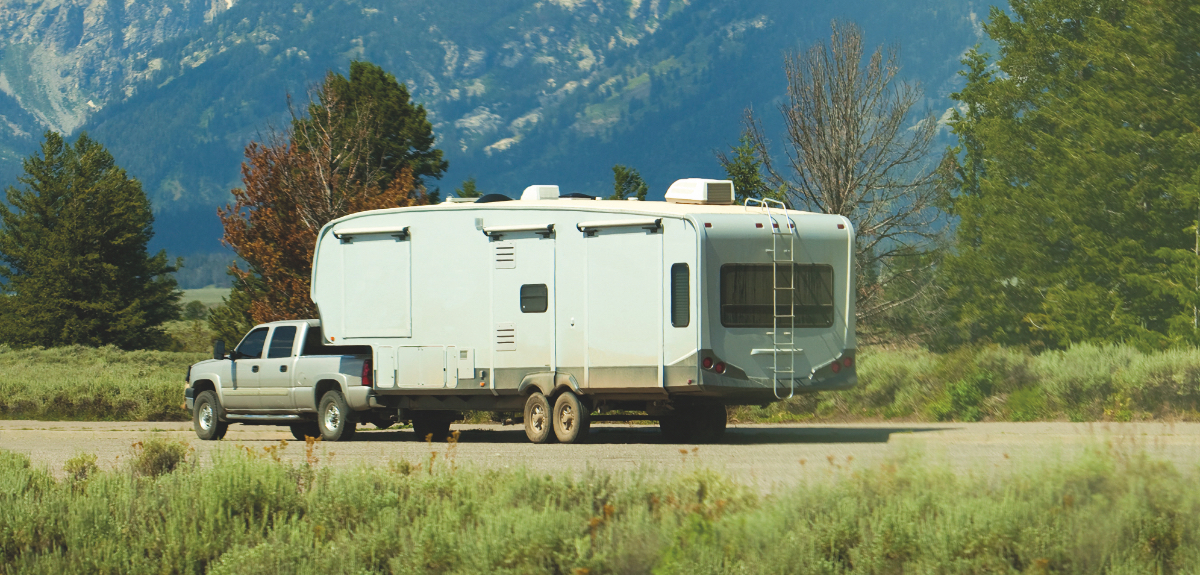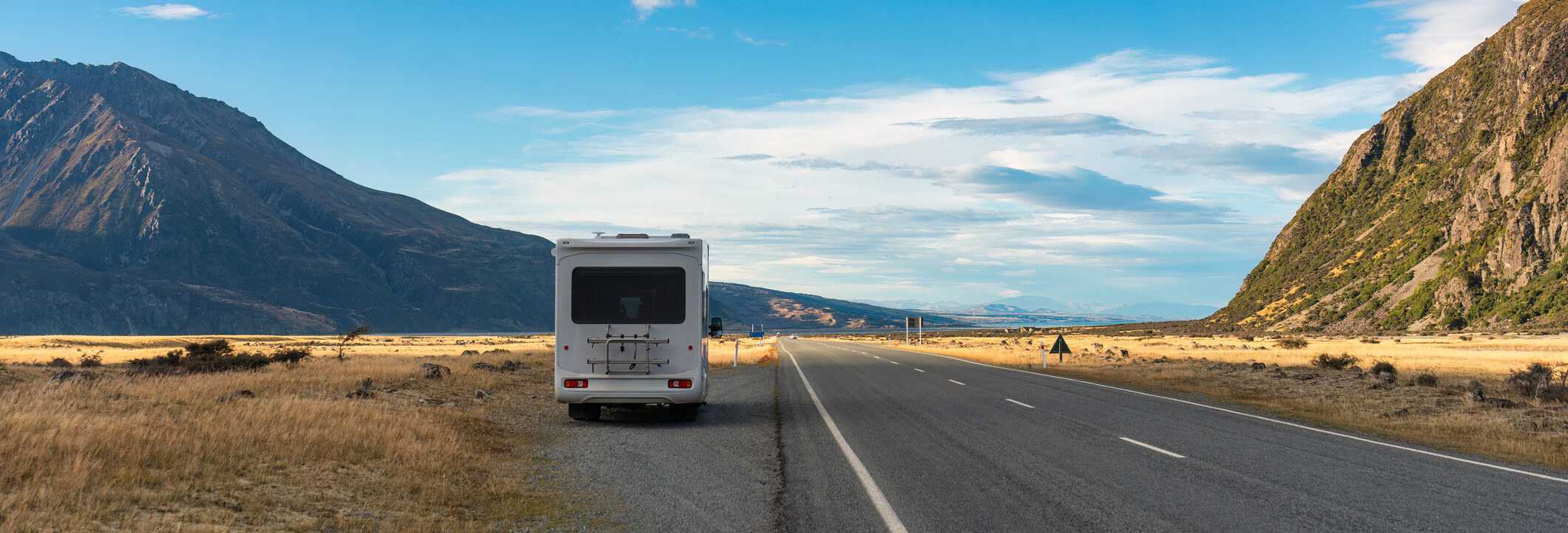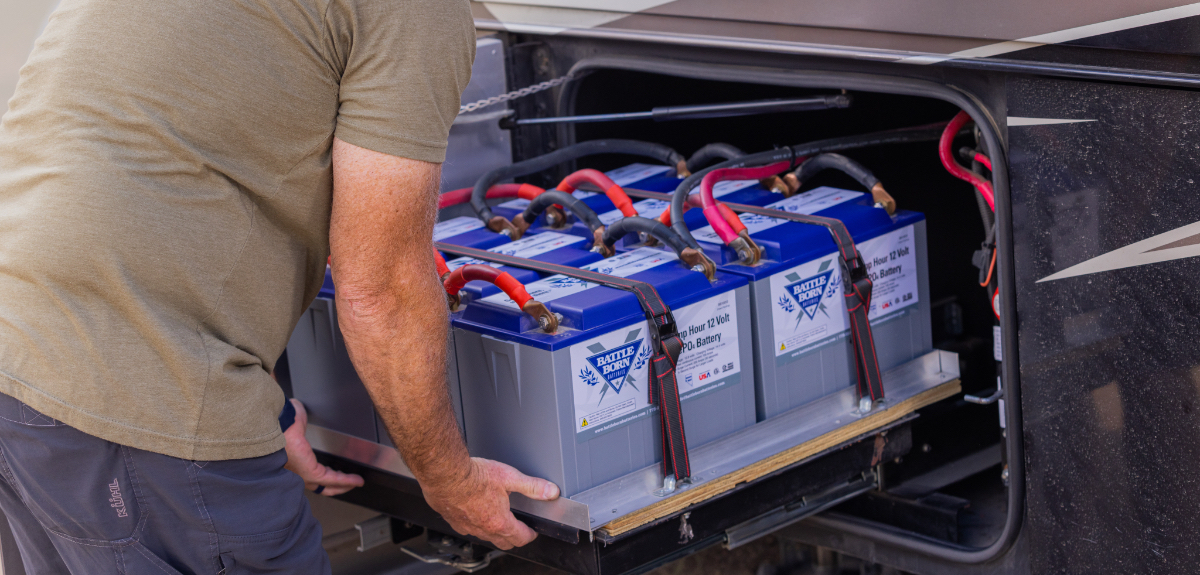How to Offset Your RV’s Carbon Footprint
Everything you can do to make your lifestyle easier on the environment without making anything harder for you.
Image Caption:
It can be hard to make environmentally friendly choices when living and traveling in an RV. Tasks like composting and recycling can be reliant on the systems in place at the campgrounds you visit, but knowing how to offset your RV’s carbon footprint is something that is in your control.
From investing in carbon offsets to setting up internal systems to make your RV life more eco-friendly, there is actually a lot you can do. Here are just a few actionable steps you can take to reduce your RV carbon footprint.
Choose Your RV Carefully
If you don’t already have an RV, the rig you choose is important for reducing your environmental impact. Choosing a smaller rig will require fewer materials in the build process and you will also get better fuel economy on the road. Plus, smaller RVs and travel trailers require less energy to heat and cool.
In addition, you also have a choice as to the type of fuel your RV requires. Some diesel RVs, for example, can also run on a biodiesel blend that mixes diesel fuel with some kind of natural plant oil (soybean oil is one option). While this only a viable option for some RVs, it is more eco-friendly than regular gasoline.
Commit to Recycling
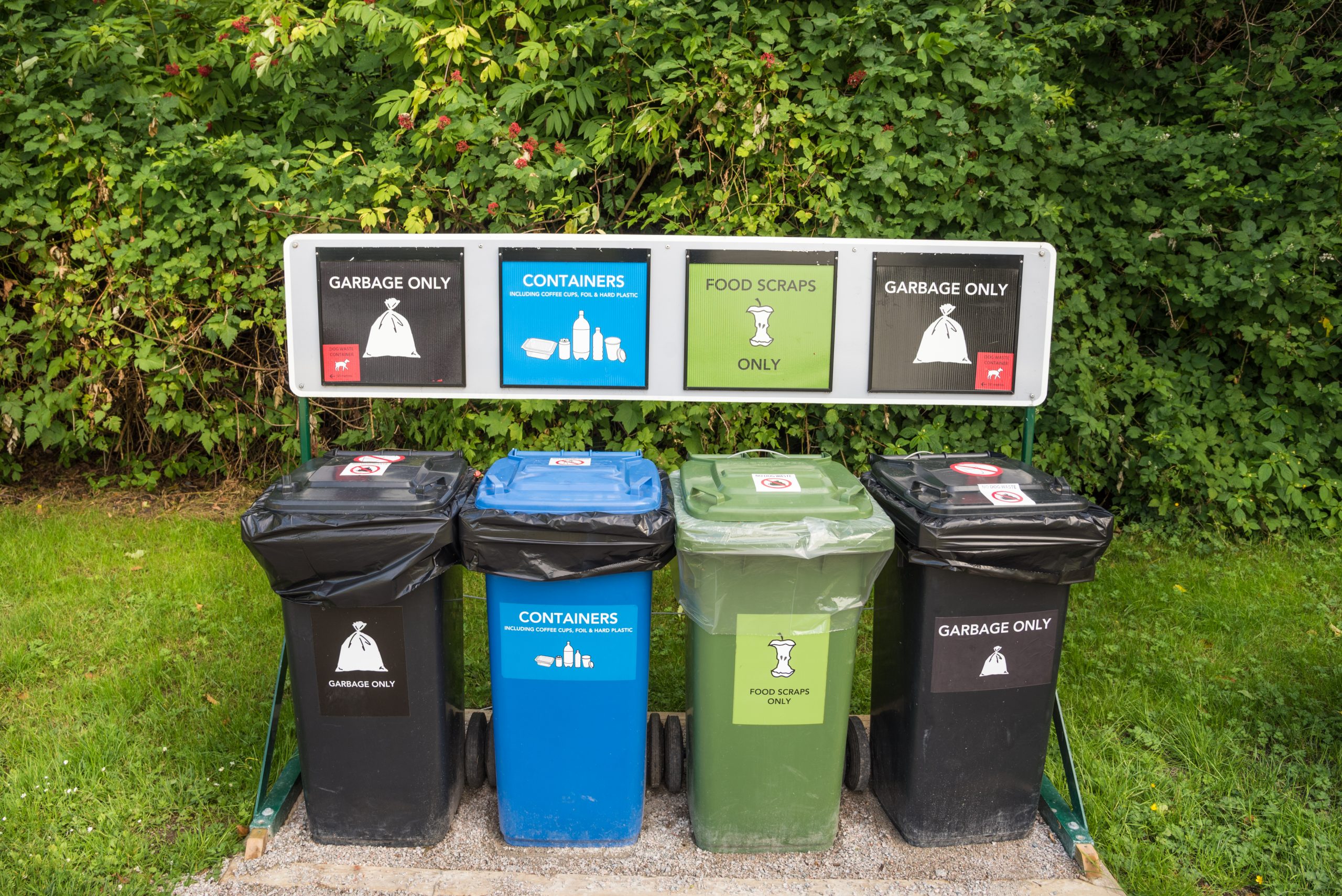
Taking advantage of recycling bins at campsites is a great way to reduce your RV’s carbon footprint (image from Getty).
Unfortunately, not all campgrounds make recycling easy or even possible. There are usually just a few large dumpsters at various locations throughout the park for you to dispose of all your waste. If you stay at an eco-friendly resort, hopefully there will be individual dumpsters for trash and recycling.
If not, you will have to commit to transporting your recycling until you can dispose of it properly. Get an extra five-gallon bucket (or any other type of container with a sealed lid) and store it in one of your trailer’s underneath storage compartments. Then, dispose of your recyclables when you find an appropriate dumpster or collection station.
Use Eco-Friendly Products
From toilet paper to cleaning solutions, you always have a choice to go a more sustainable route with the products you purchase for your RV. That includes products such as dish soap, bath detergents, septic tank cleaners, LED light bulbs, and much more.
Most chemical-based cleaning products are incredibly harmful to the environment. Swap them out for enzyme-based cleaners. Regular light bulbs are inefficient and can even damage the light housings if left on for extended periods. Swap them out for cooler, more energy efficient LEDs.
Drive Conservatively
The way you drive plays a pivotal role in your RV’s fuel consumption. Accelerating gradually and braking well in advance of the point at which you actually need to come to a stop will save you fuel and also reduce wear and tear on the critical drive systems in your RV.
When you are underway, however, we all have the tendency to want to get where we are going as quickly as possible. If you aim for an average speed of 55 miles per hour, however, you will maximize your fuel economy and reduce overall carbon emissions from your vehicle.
Practice Regular Vehicle Maintenance

Regular maintenance checks on your RV or tow vehicle will reduce carbon and long-term expenses (image from Getty).
Neglect is the enemy of the long-term health of the environment and your RV. So you should commit yourself to a regular maintenance schedule if you want to offset your RV carbon footprint. That means regular oil changes, routine tire pressure checks, and annual RV system checks.
Find a trusted mechanic in your area who can give you a ‘state of your RV’ check if you haven’t been keeping up on maintenance so far. The more you can maintain the engine and drivetrain regularly, the healthier your RV will stay and the cleaner it will run.
Park Mindfully
Whenever you pull into a new campground, you will have to decide how to park your RV. Your choice probably already takes into account factors like where you want the door and which side the hookups are on, but does it consider how the way in which you park impacts how much energy it takes to heat and/or cool your RV?
Whenever it is possible, try to park your RV in the shade. Consider how the sun will move across the sky during the day and how it will heat your RV. If you can, always try to park your RV so that direct sunlight hits the wall opposite of your RV refrigerator. This will help your fridge use less energy to keep your perishable foods cool.
Support Local Economies
Shopping for food and other RV supplies is most convenient at those large chain stores that are usually right off the highway. Unfortunately, shopping at these kinds of stores doesn’t always circulate as much money into the local economy as if you shopped locally.
RV tourism is a major economic driver for many destinations throughout the U.S. The more that RV owners commit to shopping at local stores, the more those destinations (and the people who call them home) can survive and thrive.
Shopping locally is also a great way to stimulate local economies and reduce the amount of fuel used to transport goods to those larger chain stores from distant destinations.
Go Renewable
I grew up using a lot of paper plates and plastic cutlery RVing with my family. These kinds of items were lighter and, frankly, they were easier to use because they reduced the need for clean up when we were camping.
Unfortunately, disposable items are not the way to reduce your RV carbon footprint. Ideally, look for materials like recycled steel, bamboo, or any other material that you can recycle down the line. These will last for multiple uses and you can dispose them in a much more eco-friendly fashion when they have been thoroughly used up.
Avoid Plastics
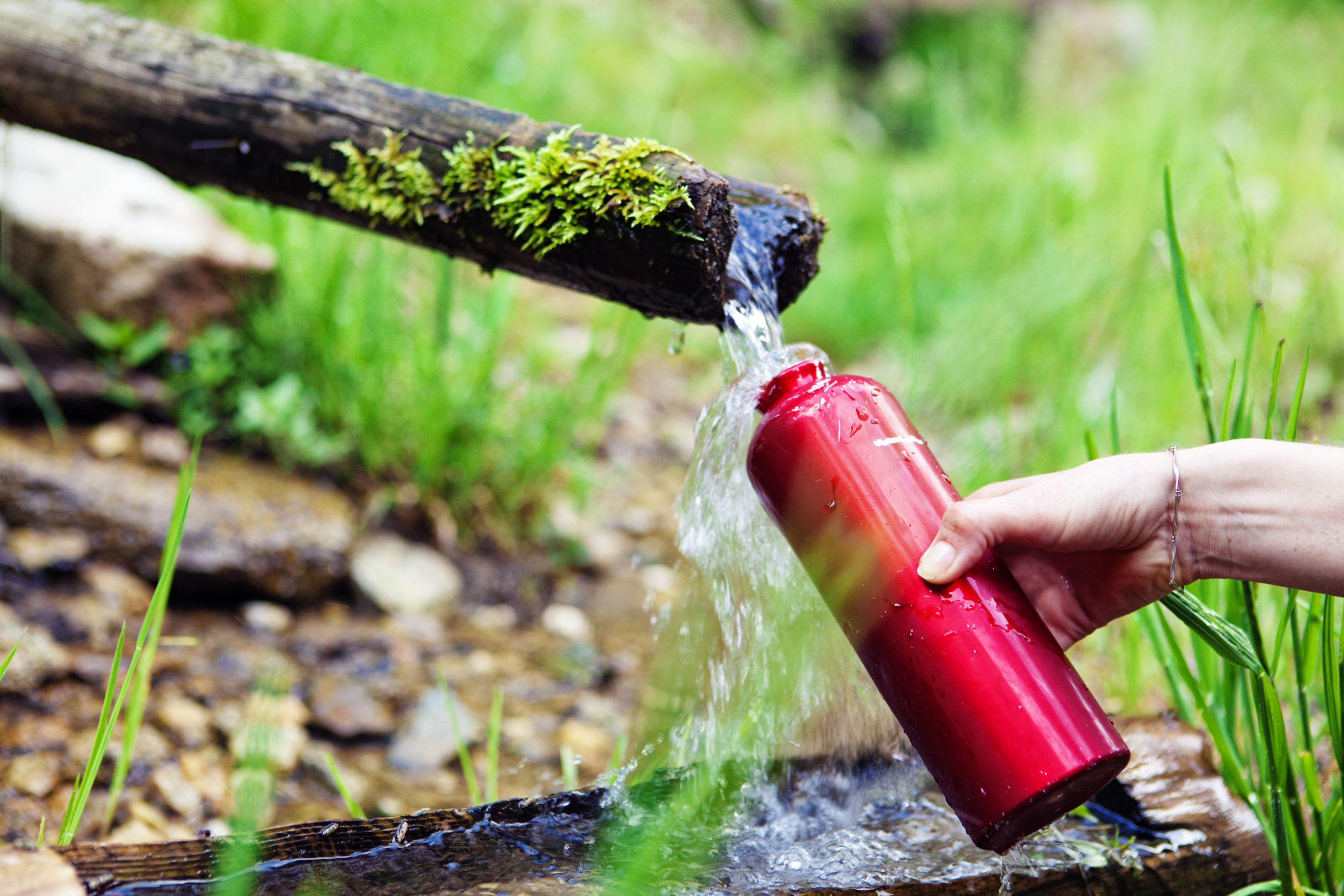
refilling the water canteen at a forest springCHECK OTHER SIMILAR IMAGES IN MY PORTFOLIO….
Please, please, please! Whatever you do, avoid relying on plastic water bottles when you are RV camping. Single-use plastics are one of the top polluters of oceans, streams, lakes, and any site where run off accumulates.
There are so many reusable water jugs and personal water bottles out there these days. Get a large jug or two for use inside your RV and make sure each or your RV companions has a reusable water bottle for personal use.
Bulk Up Your Insulation
Another way to reduce your RV carbon footprint is to add insulation to the walls, floor, and ceiling of your rig. A well-insulated RV will be more resistant to heat transfer, which helps you keep it cool or warm, depending on the time of year.
Try Alternative Energy Sources
Installing solar panels on the roof of your RV is a great way to reduce your reliance on the electrical grid. The odds are pretty good that you seek good weather with clear skies when you are RVing, which means roof-mounted panels can be capturing the power of the sun and storing it in your RV’s onboard battery bank whenever the sun is shining.
Alternatively, you can also try wind power. There are actually wind energy turbines scaled down for RV use available for purchase. While this technology is relatively new and can be quite noisy, it is bound to continue to develop and become a more and more viable option in the future.
There are many ways to offset your RV’s carbon footprint. Fortunately, most of them are quite simple and will involve a relatively easy adjustment to your normal RV living routine and are as easy on the environment as they are on your wallet.


